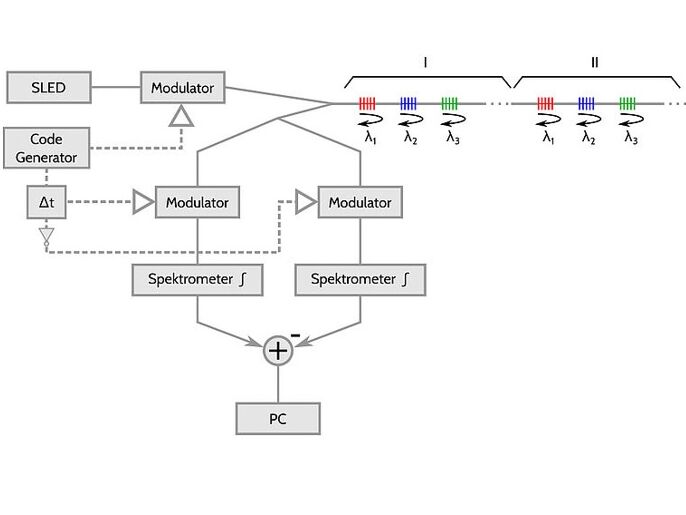The need for networking in everyday life is constantly increasing. Buzzwords such as Industry 4.0 or the Internet of things are finding their way into the economy and the private sphere. Not only is the amount of data to be transmitted increasing, but also the need for sensors that provide information about the status of various systems. In this context, the use of optical fibres with their inherent advantages - EMC independence, fire resistance, low weight/volume and, last but not least, security against eavesdropping - has become indispensable.
Fibre optic measurement systems offer a range of different measurement methods. Distributed sensor technology measures strain or temperature over a wide range of the fibre optic cable. However, the local spatial resolution there is very limited and only relative measurements can be made. With Optical Frequency Domain Reflectometry (OFDR), high spatial resolution is only achieved in the near range (< 50 m). In contrast, point sensor technology convinces with high spatial resolution and absolute measurement at different lengths. This is made possible by Fibre Bragg Gratings (FBGs), among other things. One research goal is therefore to increase the number of FBGs within a fibre in order to achieve distributed sensing, so to speak. Current multiplexing techniques are Wavelength Division Multiplexing (WDM) or Optical Time Domain Reflectometry (OTDR). However, both methods are clearly limited in terms of the number of sensors, measurement dynamics and measurement time.
The research project combines the established WDM technology with code division multiplexing (CDM), which allows the spectral overlapping of several FBGs. In this way, the WDM is multiplied by the number of overlapping spectra. The number of sensors is to be increased to 1,500 almost freely distributable sensor points. Furthermore, the combination enables the simultaneous readout of several sensors of a WDM section. Compared to the OTDR, this reduces the measurement time considerably.

